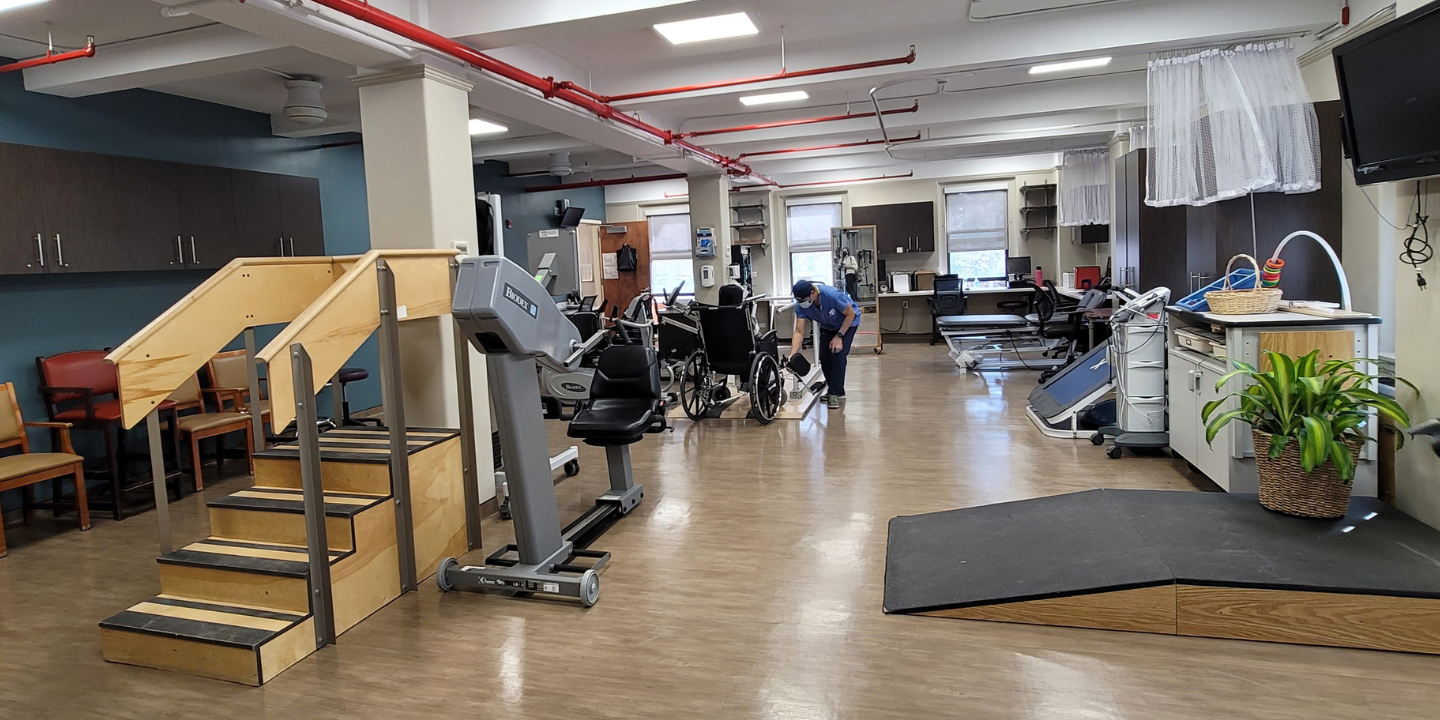Written in Collaboration with: Terrence Seymour, RCP (Respiratory Care Practitioner)
In our ongoing commitment to providing New Yorkers with five-star short term rehabilitation services, we are excited to introduce our onsite respiratory therapist, Terrence Seymour. His passion for helping patients with respiratory therapy needs was evident in our recent conversation where he discussed the healing power of cardiopulmonary rehabilitation, common misconceptions about lung health, and tips for maintaining respiratory health as you age.
Meet Terrence Seymore, RCP
With over 18 years of experience as an Adjunct Professor, Terrence Seymour has educated and mentored countless students, equipping them with the necessary skills and knowledge to excel in this critical profession. He has also set up numerous respiratory therapy departments, including sleep diagnostic and pulmonary rehabilitation. He has served as the Director of Cardiopulmonary Care over the last 20+ years in three hospitals and a nursing home simultaneously, demonstrating his exceptional leadership abilities and commitment to helping others. As the onsite respiratory therapist at the Methodist Home, he educates staff to see how we can implement pulmonary rehabilitation to improve their care and help in their recovery.
Terrence was motivated to specialize in cardiopulmonary rehabilitation due to the unending cycle of patients with chronic lung disease who were stuck in the revolving door of continually being readmitted to hospitals due to flare-ups or difficulty with managing their disease. Pulmonary rehabilitation aims at reducing readmission and helping patients improve their overall quality of life through education, lifestyle changes, and breathing exercises.
As a respiratory therapist, Terrence has seen many patients who needed continuous oxygen at the beginning of their pulmonary rehab program eliminate their oxygen dependence by the end of their successful rehab journey.
Respiratory Therapy During Short Term Rehab at the Methodist Home
Each patient admitted to the Methodist Home for short term rehabilitation is evaluated by our skilled nursing and therapy teams. From those thorough reviews, a customized care plan is created for each patient to meet their individual needs.
Pulmonary rehabilitation is a comprehensive program that uses a multi-disciplinary approach to patient care, including physical therapy for strength training, respiratory therapy for education and breathing exercises, and nursing services for medication management. Part of any successful rehab program must include weekly and/or monthly meetings to discuss the progress and obstacles to success for each patient.
While receiving respiratory therapy as part of a cardiopulmonary rehabilitation program, patients are trained about how to manage their disease. They learn more about their disease, how to manage their symptoms, can do more things without limitations, and learn about warning signs. Their respiratory therapy journey will also give them an increased exercise tolerance that leads to an overall better quality of life.
Common Misconceptions about Respiratory Health
Misconception: You do not need to quit smoking if you have COPD.
Truth: It is important for anyone who smokes to quit – especially if you have COPD.
Misconception: People who smoke are the only ones who get chronic lung disease.
Truth: While smoking dramatically increases the risk of developing chronic lung disease, it isn’t impossible for non-smokers to be diagnosed.
Misconception: Young people are never diagnosed with chronic lung disease.
Truth: Lung disease is more prevalent in people over 40, but younger people in high-risk groups may also receive a diagnosis.
Misconception: You cannot live a normal life after a chronic lung disease diagnosis.
Truth: Early detection and treatment can help you manage your disease and enable you to continue living an active life.
Breathing Exercises and Techniques in Rehabilitation
Physical activity can reduce your risk of serious illness. This includes heart disease, stroke, diabetes, and some forms of cancer, including lung cancer. With lung disease such as COPD, breathing exercises can reduce episodes of shortness of breath.
Following a recommended routine of regular breathing exercises can increase the strength and function of your respiratory muscles, making them more efficient. Breathing exercises like diaphragmatic breathing and pursed lip breathing can also improve your circulation and strengthen your heart, enhancing your overall physical and psychological well-being. It can decrease the risk of developing other conditions such as stroke, heart disease, and depression. Regular exercise is also one of the most important interventions to prevent the onset of type 2 diabetes.
Tips for Maintaining Respiratory Health and Preventing Respiratory Issues
In addition to breathing exercises, there are a number of other healthy lifestyle tips you can follow to keep your lungs and heart (and the rest of your body) in optimal health.
- Stop Smoking
- Exercise Regularly
- Eat Healthy
- Maintain a Healthy Weight
- Practice Deep Breathing
- Keep Air Inside Your Home Clean
- Follow a Regular Preventive Health Schedule
- Get Annual Vaccines
- Avoid Exposure to Germs
How Can We Help You?
Respiratory health and cardiopulmonary rehabilitation play a vital role in achieving and maintaining lung health. Success is achieved using a combination of patient education, breathing and other physical exercises, and healthy living habits. By taking steps to address common misconceptions and embrace the benefits of breathing exercises, short term rehab patients can look forward to a future with improved well-being after they return home.
We’d love to talk to you about your respiratory therapy needs. Contact us today!

